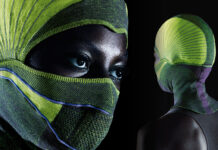SPINEXPO Paris is the carefully curated European version of SPINEXPO Shanghai, a very successful trade fair that has been promoting innovative knitwear manufacturers and spinners for over twenty years. The Paris show took place in the Cité de la Mode et du Design on the Quai d’Austerlitz, in a very intimate yet spacious location on the river Seine, and welcomed 510 visitors from 28 countries and three continents. We travelled to the French capital to see a preview of the Spring/Summer 2020 yarn collections at the show.
Compared to its colossal Shanghai parent show, SPINEXPO Paris is a little taster for what will be shown in Asia, a small but inviting preview to whet the appetite of buyers and creatives alike. The trend research area was the focal point of the fair: an open space with carefully curated samples and garments greeted visitors on their arrivals, so we dived right in to study the new ideas for Spring/Summer 2020.
In between
In between was the theme of the trend area, a title that echoes both the uncertainties of our economic and environmental future but also the ever ingenious and spontaneous solutions that many companies are constantly coming up with to control the damage we have caused to our planet.
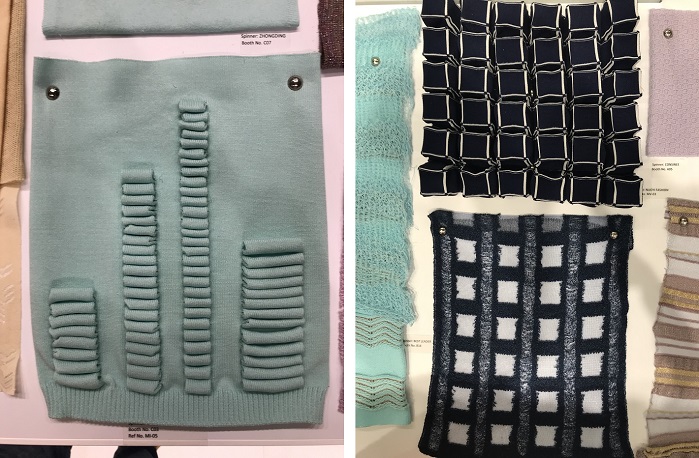
The textiles industry is the second most polluting industry, despite consumers’ new (and hopefully long-lasting) awareness of unfair manufacturing practices, sustainability has to go hand in hand with desirability, and ease. It is essential for any product today to have a true, sustainable story behind it, but the story itself won’t bring in the sales: customers still want to purchase garments that are ethically made, relatively cheap, readily available and that look good.
We are on one hand attracted to sustainability, to renewable energies, ethical methods of manufacturing, but at the same time we are over producing and over consuming. We envisage a future governed by AI and emotionally responsive robots, but we still crave an ancestral need of craftsmanship in the products we buy, a closer and more humane connection with the objects with surround ourselves with.
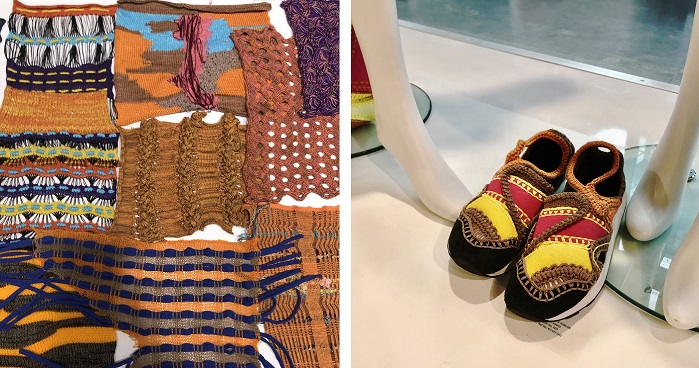
This is a great task that needs to be undertaken by the textile and the garment manufacturing industries, and like any great tasks, it requires great minds that can think on their feet, adapt quickly, reassess their identity and move forward. In between perfectly describes the current state of the industry and the companies that spark in its firmament: a moment where the negative aspects of uncertainty become exciting solutions, where the cards are being completely reshuffled and the rules of the game reassessed.
The trend area at SPINEXPO is curated by Karine Van Tassel, founder and organiser, in collaboration with a team of designers and various colleges. It is a work in progress, an ever-changing space that opens up an interesting conversation between the organisers, the exhibitors and the young designers, a focal point of the fair that addresses the industry’s challenges with a creative and at times romantic approach.
Organic Futurism
Organic Futurism is the first theme illustrated by the trend area, a feminine collection of swatches and garments with a very lightweight, performance aspect and yet very elegant. This idea of a ‘curated clash’ becomes more evident in the choice of contrasting materials and fibres: man-made versus natural, noble with high performance, all exalting the other’s qualities, giving birth to new hybrids with unique tactile qualities. Other samples were beautifully hand crafted using recycled materials and waste products.
Human Centric
Human Centric celebrates the body as a temple. Design choices are informed by the body and dictated by its needs to perform differently in our busy day to day life. Wearable technologies seamlessly integrate with a clean aesthetic, functional aspects are transformed into beautiful features. Some of the fabrics in this group have a very organic, yet engineered aspect, echoing the hybrid features of the previous theme.

The idea of ‘recreating’ and injecting new life into discarded materials was also strong in this theme: words like ‘upcycling’ and ‘recycling’ have become so common and almost devoid of any true meaning in our common lexicon. The fabrics developed by the designers in the trend area using old or waste materials are however incredibly refreshing and innovative.
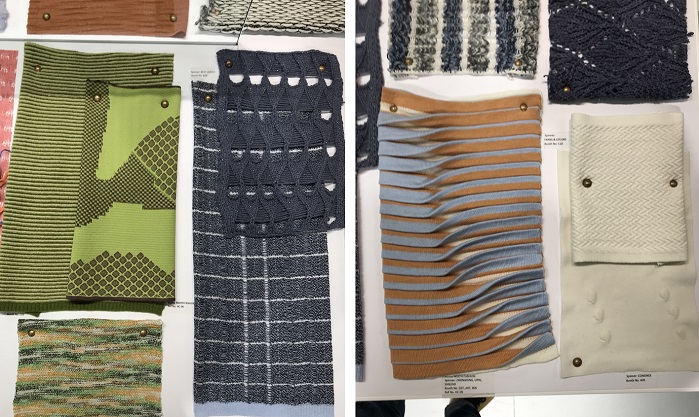
Yarns from Toyoshima were used in this group: the Japanese company was founded over a hundred years ago and it has always promoted a sustainable way of living, which includes an ethical treatment of their employees, gender equality and care for the environment. Toyoshima have also industrialised a dyeing process that extracts colour from food waste, which is both sustainable and economically viable.
Modern Vintage
Modern Vintage follows on this theme: over production has led to an incredible amount of textile waste which can be converted into new materials using green energy. Let’s make less, let’s make it better and let’s turn our waste material into our raw material.
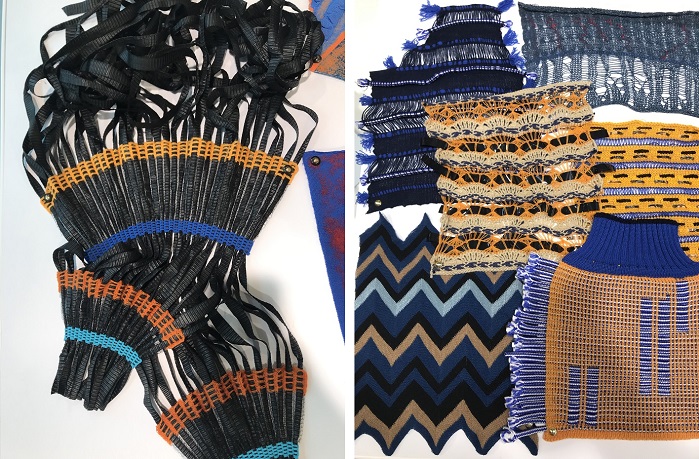
Fabrics in this group are characterised by textured yarns in contrasting gauges and stitches, heritage plaid patterns are reinterpreted with modern looking inlay techniques. Colour and pattern come together in brave, bold marriages, their qualities exalted by intricate knit structures with a strong hand-crafted feel.
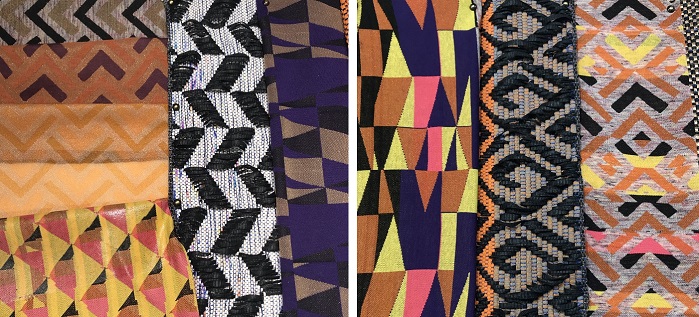
Old quilt patterns are reinterpreted with sharp, fine gauge intarsias with vibrant graphic qualities. Yarns from Shilead were used in this section: the company’s ethos of reusing its surplus stock, recycling and reducing their environmental impact perfectly represents the concept of this theme.
Bio Construction
Bio Construction highlights the developments of an exciting and ever-growing field of our human evolution: bio technology. The marriage between nature and technological innovation is paving the way for intelligent materials and components that can be grown organically and sustainably.

Natural colours, environmentally friendly and digital dyes are key elements in this group, along with high-tech and innovative techniques like bio-implantable devices for reconstructive surgery.
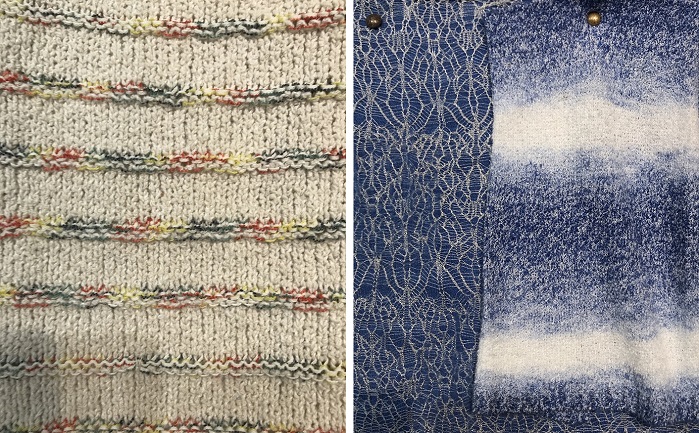
This group is probably the one that has the largest scope for development, where the conversation between the creativity and the spontaneity of the designers can be interpreted and industrialised with the know-how of the exhibitors. Yarns from HUBO were used to illustrate this theme: this season their collection featured high durability yarns, combining organic/sustainable cotton with Ecovero and Refibra, amongst others.
Material Innovation
Material Innovation is the last section of the trend area. It is an invitation to use materials and fibres that already exist outside the fashion industry in new ways. Yarns for the technology and the medical fields, for example, could be used and developed further by spinners to broaden their markets, and possibly to inspire new collisions between different areas to happen (like medicine and fashion, for example).
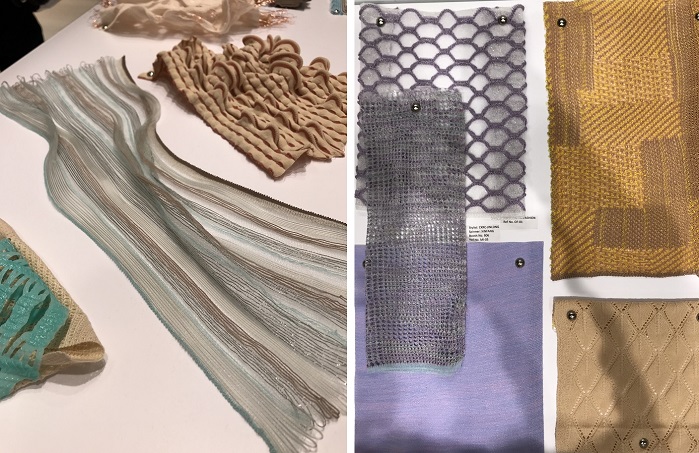
Compression garments with beautiful and functional aesthetic qualities are part of this group, along with samples knitted in conductive threads that can produce and regulate sound.
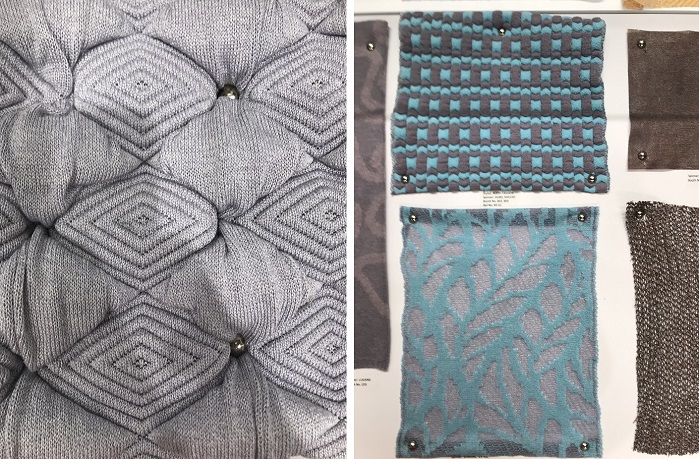
The link between sound and medicine/wellbeing is also a topic that is being researched in more depth by scientists today, so this could be another area of major developments for the textiles industry.

Subscribe To Our Newsletter
Join our mailing list to receive the latest news and updates from our team.


